It will be a long time before enough marketplaces, constables, and the like are built to impact the value of trade goods.
From the ashes - A Delhi AAR
- Thread starter Matrim_Cauthon
- Start date
-
We have updated our Community Code of Conduct. Please read through the new rules for the forum that are an integral part of Paradox Interactive’s User Agreement.
You are using an out of date browser. It may not display this or other websites correctly.
You should upgrade or use an alternative browser.
You should upgrade or use an alternative browser.
Dewirix - I got Boina in Madagascar and Transkei in continental Africa (just south of Natal), so not all is lost. It's important to pick bases to project power later in the game. I'd prefer to pick the islands, but I'm afraid not many of them will be free by the time I get enough colonial range.
Ashantai - Thank you! Go Delhi indeed!
anweRU - Thanks for the information. Will the demand depend on the marketplaces built by everyone or just by me?
Ashantai - Thank you! Go Delhi indeed!
anweRU - Thanks for the information. Will the demand depend on the marketplaces built by everyone or just by me?
The reign of Padishah Khidr Khan I (1029-1033 AH) (1620-1624 in the Christian calendar) (A/D/M 6/6/7)
(This is the time I changed from 4.0c to 4.1b, because even though Khidr Khan I had ADM of 6 the modernization decision wasn't appearing.)
Known as Khidr Khan, the controversial.
Khidr Khan I was very ambitious. Just like his ancestor, Mohammed Shah IV the reformer, he thought that Delhi would be able to face foreign nations only if they emulated their ways. But just the fact that he had worn Russian clothes while still a boy had caused much controversy, so he preferred to wait before making any reforms (wait until stability reaches +3 again).
While he waited, the university of Bihar was concluded. Instead of building another university, Khidr Khan I opted for the construction of a weapons manufactory in Nagpur, so that Delhi wouldn’t have to rely on Russian exports to acquire muskets.
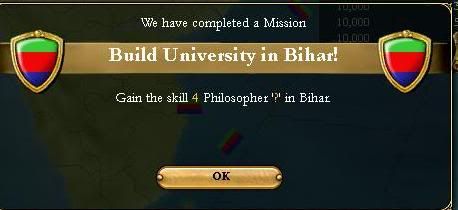
Khidr Khan I also improved relations with Great Britain, giving several gifts to King George III. These gifts were well received and soon the market of Holland was opened to Delhian merchants.
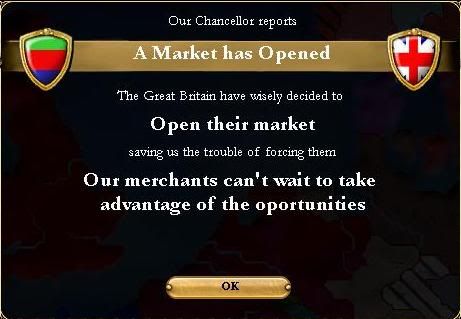
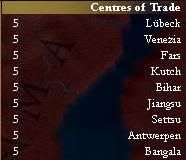
While relations with Great Britain improved, the one with Portugal soured. The Portuguese king, Sebastião I, imposed a trade embargo in 1623, which only made a war with them seem more likely.

Many of Khidr Khan’s advisors counseled him to annex Najd, but he’d have none of it. His father had promised them autonomy as long as they paid tributes, and he wouldn’t be known as an oathbreaker (cancelled mission: incorporate Najd). Instead, he increased awareness in court of the plight of the Muslims in Gaza and Judea, who were oppressed by the Castillian overlords. Some say this was the first propaganda campaign in history (new misson: protect our brethren in Gaza).
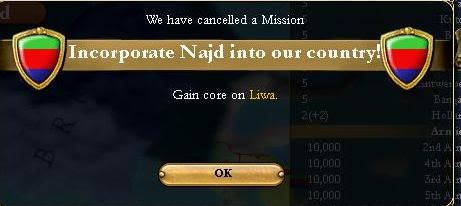
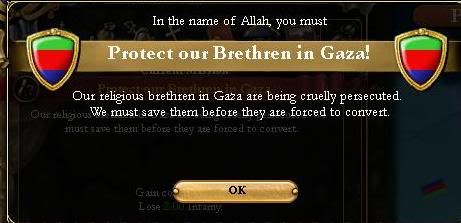
The plight of Gaza was popular among Delhians, but the way Khidr Khan chose to tackle it wasn’t. In August of 1623, the Padishah announced that by his decree all of the Delhian courtiers had to dress in the Russian fashion, and that Delhian universities would teach Greek and Russian as well as Persian. He hired many wise scientists from Russia and Byzantium to teach advanced science to the students of India’s four universities (westernization, -5 stability).
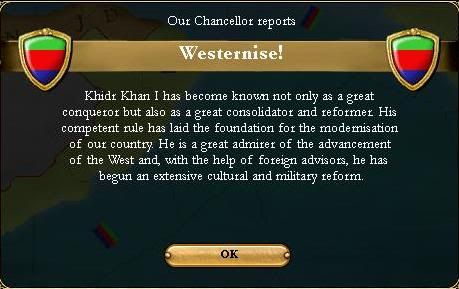
This measure wasn’t at all popular, but no open revolts happened. Instead, the unsatisfied uramah (nobles) conspired among themselves and poisoned young Khidr Khan’s water in January of 1625. Historians agree that the Padishah’s food taster was part of the conspiracy.
(This is the time I changed from 4.0c to 4.1b, because even though Khidr Khan I had ADM of 6 the modernization decision wasn't appearing.)
Known as Khidr Khan, the controversial.
Khidr Khan I was very ambitious. Just like his ancestor, Mohammed Shah IV the reformer, he thought that Delhi would be able to face foreign nations only if they emulated their ways. But just the fact that he had worn Russian clothes while still a boy had caused much controversy, so he preferred to wait before making any reforms (wait until stability reaches +3 again).
While he waited, the university of Bihar was concluded. Instead of building another university, Khidr Khan I opted for the construction of a weapons manufactory in Nagpur, so that Delhi wouldn’t have to rely on Russian exports to acquire muskets.

Khidr Khan I also improved relations with Great Britain, giving several gifts to King George III. These gifts were well received and soon the market of Holland was opened to Delhian merchants.


While relations with Great Britain improved, the one with Portugal soured. The Portuguese king, Sebastião I, imposed a trade embargo in 1623, which only made a war with them seem more likely.

Many of Khidr Khan’s advisors counseled him to annex Najd, but he’d have none of it. His father had promised them autonomy as long as they paid tributes, and he wouldn’t be known as an oathbreaker (cancelled mission: incorporate Najd). Instead, he increased awareness in court of the plight of the Muslims in Gaza and Judea, who were oppressed by the Castillian overlords. Some say this was the first propaganda campaign in history (new misson: protect our brethren in Gaza).


The plight of Gaza was popular among Delhians, but the way Khidr Khan chose to tackle it wasn’t. In August of 1623, the Padishah announced that by his decree all of the Delhian courtiers had to dress in the Russian fashion, and that Delhian universities would teach Greek and Russian as well as Persian. He hired many wise scientists from Russia and Byzantium to teach advanced science to the students of India’s four universities (westernization, -5 stability).

This measure wasn’t at all popular, but no open revolts happened. Instead, the unsatisfied uramah (nobles) conspired among themselves and poisoned young Khidr Khan’s water in January of 1625. Historians agree that the Padishah’s food taster was part of the conspiracy.
Was that two rounds of westernisation, or have you still got one more to go?
Khidr Khan didn't last long did he? I don't suppose his heir was old enough either, making this your eight regency in 220 years! I think that 4.1b made some changes in this respect, because my Japan game seemed to produce longer-lived monarchs than was the case in 4.0c.
Taking on the Spanish again should be fun, but we'll have to wait out the regency first.
Khidr Khan didn't last long did he? I don't suppose his heir was old enough either, making this your eight regency in 220 years! I think that 4.1b made some changes in this respect, because my Japan game seemed to produce longer-lived monarchs than was the case in 4.0c.
Taking on the Spanish again should be fun, but we'll have to wait out the regency first.
The reign of Padishah Islam Shah I (1033-1045 AH) (1624-1636 in the Christian calendar) [/U][/B] (A/D/M 5/7/5)
Known as Islam Shah I, the defiant
Islam Shah I was Khidr Khan I’s little brother. He wasn’t as talented or sharp of mind as his brother and also did not share his brothers admiration towards the west, and maybe that’s why he lived so long, having fewer assassination attempts.
The first period of Islam Shah I’s reign was marked by the Taungu War of Provocation. Several Taungu agents were found in Delhi’s provinces, trying to raise the nationalistic sentiments of some minorities. This infuriated Islam Shah I, who also wanted to test the new weapons Delhi’s armies had.
The war against Taungu was quite easy in fact. The first battle of Kachim was won with more deaths on Delhi's side than on Taungu's, it's true, but Delhi’s armies were outnumbered two to one and still achieved victory. The other battles got easier and easier as Taungu’s forces became more demoralized. In 1631 a peace deal would be signed, with Islam Shah demanding monetary compensation and the release of Ayythaya.


In 1633, Islam Shah I claimed the title Defender of the Faith. The Persian mufti could no longer call himself truly caliph, since he had been defeated by the Byzantines, who had demanded the release of Mughal as an independent state.
In 1634, an Arab revolt began in the Castillian provinces of Judea and Beirut, but the rebels failed to take Gaza. Islam Shah I, overconfident after the easy victory against Taungu, decided that he should attend to the pleas of his ulemahs (holy men) and try to retake the Holy Land. And so started the Delhi-Portuguese War of Conquest.

The war initially in Delhi’s favor, with great victories at Diamentia ad Alexandria. Delhi’s spies also garnered support from the Muslim population of Libya and Tunisia, even if some of these devout had to be convinced to make Jihad with gold.

Delhi would as well make a successful landing in Natal, Southeastern Africa, taking the Portuguese fort built there and sending the colonists back to Western Africa.

But after 1635, Portugal’s better weapons and larger numbers started to turn the tide of the war. In the battle of Lybia 20 entire Delhi regiments would be lost against Portugal’s Mauritian infantry.

And if that wasn’t bad enough, the Byzantine Empress Helene I took advantage of Delhi’s plight to declare war on the caliphate in April, along with their allies, the small isolated state of Mughal.

Islam Shah I knew that he couldn’t actually handle a conflict with the two powerful western nations at the same time. Delhi still wasn’t ready to tackle the Christians yet, so he signed a declaration conceding defeat to Portugal in July. He lost the title of True Caliph to many (legitimacy fell from 80 to 60).
The final years of Islam Shah I’s life would be spent defeating the small state of Mughal, which was too distant from Byzantium to receive actual support. Islam Shah would try to form a large enough force to attack Byzantium, on the other side of Persia, but he’d die of scarlet fever in May of 1636, before it was done.
Known as Islam Shah I, the defiant
Islam Shah I was Khidr Khan I’s little brother. He wasn’t as talented or sharp of mind as his brother and also did not share his brothers admiration towards the west, and maybe that’s why he lived so long, having fewer assassination attempts.
The first period of Islam Shah I’s reign was marked by the Taungu War of Provocation. Several Taungu agents were found in Delhi’s provinces, trying to raise the nationalistic sentiments of some minorities. This infuriated Islam Shah I, who also wanted to test the new weapons Delhi’s armies had.
The war against Taungu was quite easy in fact. The first battle of Kachim was won with more deaths on Delhi's side than on Taungu's, it's true, but Delhi’s armies were outnumbered two to one and still achieved victory. The other battles got easier and easier as Taungu’s forces became more demoralized. In 1631 a peace deal would be signed, with Islam Shah demanding monetary compensation and the release of Ayythaya.


In 1633, Islam Shah I claimed the title Defender of the Faith. The Persian mufti could no longer call himself truly caliph, since he had been defeated by the Byzantines, who had demanded the release of Mughal as an independent state.
In 1634, an Arab revolt began in the Castillian provinces of Judea and Beirut, but the rebels failed to take Gaza. Islam Shah I, overconfident after the easy victory against Taungu, decided that he should attend to the pleas of his ulemahs (holy men) and try to retake the Holy Land. And so started the Delhi-Portuguese War of Conquest.

The war initially in Delhi’s favor, with great victories at Diamentia ad Alexandria. Delhi’s spies also garnered support from the Muslim population of Libya and Tunisia, even if some of these devout had to be convinced to make Jihad with gold.

Delhi would as well make a successful landing in Natal, Southeastern Africa, taking the Portuguese fort built there and sending the colonists back to Western Africa.

But after 1635, Portugal’s better weapons and larger numbers started to turn the tide of the war. In the battle of Lybia 20 entire Delhi regiments would be lost against Portugal’s Mauritian infantry.

And if that wasn’t bad enough, the Byzantine Empress Helene I took advantage of Delhi’s plight to declare war on the caliphate in April, along with their allies, the small isolated state of Mughal.

Islam Shah I knew that he couldn’t actually handle a conflict with the two powerful western nations at the same time. Delhi still wasn’t ready to tackle the Christians yet, so he signed a declaration conceding defeat to Portugal in July. He lost the title of True Caliph to many (legitimacy fell from 80 to 60).
The final years of Islam Shah I’s life would be spent defeating the small state of Mughal, which was too distant from Byzantium to receive actual support. Islam Shah would try to form a large enough force to attack Byzantium, on the other side of Persia, but he’d die of scarlet fever in May of 1636, before it was done.
Was that two rounds of westernisation, or have you still got one more to go?
Khidr Khan didn't last long did he? I don't suppose his heir was old enough either, making this your eight regency in 220 years! I think that 4.1b made some changes in this respect, because my Japan game seemed to produce longer-lived monarchs than was the case in 4.0c.
Taking on the Spanish again should be fun, but we'll have to wait out the regency first.
Just one round of westernization. Still one more to go.
And I didn't have a regency this time. Unfortunately, Islam Shah, Khidr Khan's brother (by the age difference) wasn't nearly as good as his sibling.
Taking on the Spanish would be more fun than the Portuguese. First time I see an African state this powerful...
Ah well, let's hope the next ruler is good enough to westernise.
The Portuguese certainly seem to have the edge militarily, but you got to keep Natal so the war wasn't a dead loss.
The Portuguese certainly seem to have the edge militarily, but you got to keep Natal so the war wasn't a dead loss.
Just coming here to say next update is going to take a while as I take up with my reading (a book that's very important to me is going to be released soon). Probably by mid-November I'll return to tell the tale of Delhi.

